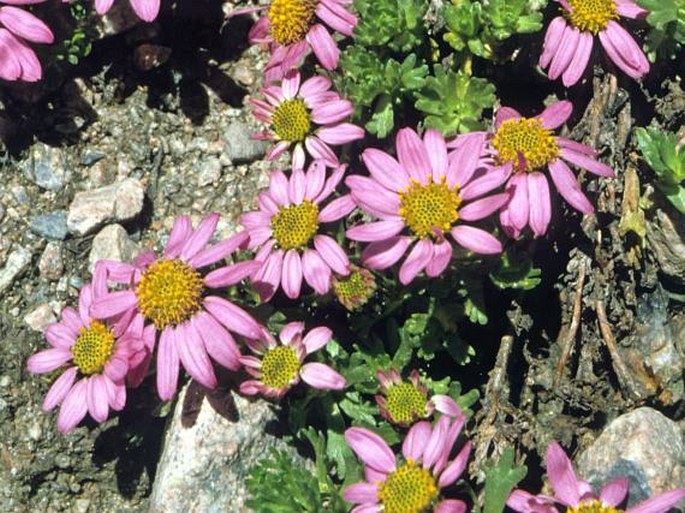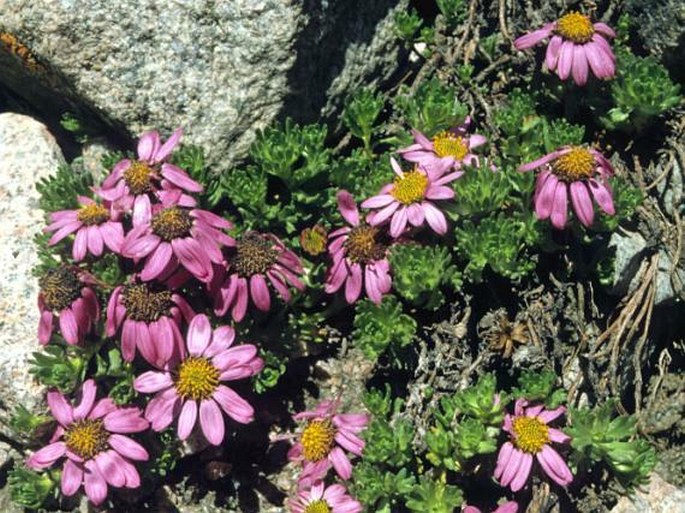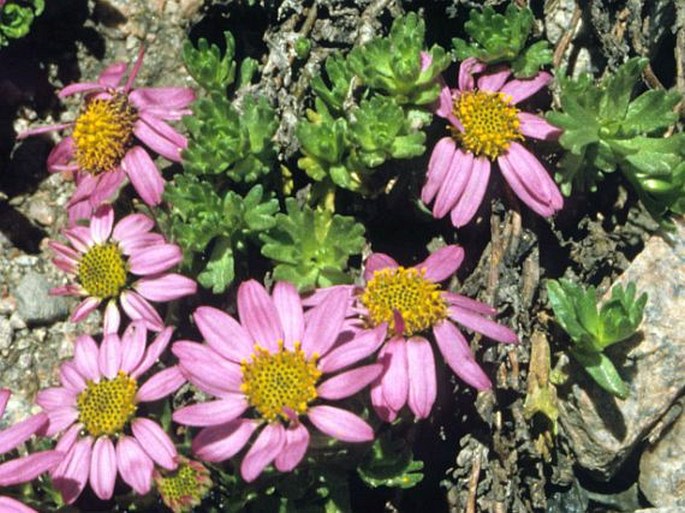Syn.: Allardia tridactylites (Kar. et Kir.) Sch. Bip.
Family: Asteraceae Bercht. et J. Presl

Distribution: Mountains of Central Asia – from Afghanistan and northern Pakistan through Tajikistan, Kyrgyzstan and western China to Kazakhstan, Altai and western Mongolia.
Ecology: It grows in gravel among rock crevices, on banks of streams or near the glaciers, at elevations from 3000 to 5000 m asl. Blooms from July to August.

Description: Perennial, low growing herb, up to 6 cm tall, glabrous, with prostrate-procumbent rhizome. Leaves alternate, subsessile, obovate-spathulate, 10–20 mm long and 5–10 mm wide, glabrous, palmately 3(–5)-lobed. Capitula solitary, sessile or on short peduncles, 2.5–3.5 cm across; involucre hemispheric, 10–20 mm across, phyllaries in 3–4 rows, abaxially glabrous, with dark-brown membranous margin, outer ones ovate-oblong to oblong, 6–7 mm long, inner narrowly oblong, 7–8 mm long, obtuse. Ray florets 8–15, sterile, lamina oblong-elliptic, 7–12 mm long, pinkish white, pink, or purple-red, apex 2–3-denticulate; disc florets yellow, 3.5–4.5 mm long. The fruit is an achene with a brownish pappus.


These images were taken in Kyrgyzstan, Tian Shan, Kyrgyz Ala-Too Range, Alamedin (July 1988).


